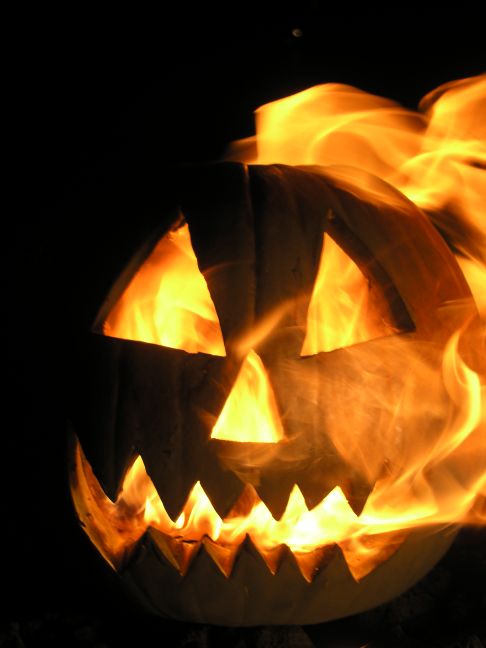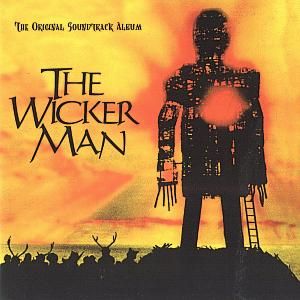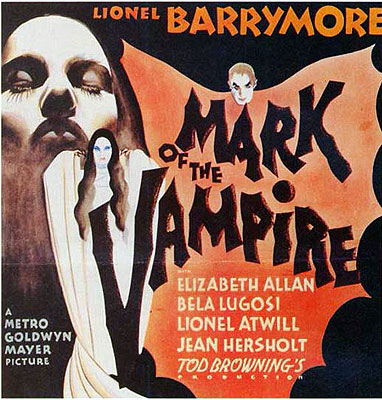Samhain and the Burning Bones
Well it's almost Halloween, my favorite holiday this side of Christmas. And just as that winter celebration echoes many pagan antecedents, so to does this fest of the harvest and remembrance of the dead.

Our Halloween actually shares roots with many pagan celebrations that were united under the church - as well as by the integration of cultures in the West and especially in America - into the celebration of All Saints Day on November 1.
One of the threads in the tapestry is Samhain, a Celtic holiday that combined a harvest celebration, a new year's party and a festival that celebrated long gone ancestors.
The good people at Wikipedia got my back on this one:
History
see also Celtic calendar.
The Gaulish calendar appears to have divided the year into two halves: the 'dark' half, beginning with the month Samonios (the October/November lunation), and the 'light' half, beginning with the month Giamonios (the April/May lunation). The entire year may have been considered as beginning with the 'dark' half, so that the beginning of Samonios may be considered the Celtic New Year's day. The celebration of New Year itself may have taken place during the 'three nights of Samonios' (Gaulish trinux[tion] samo[nii]), the beginning of the lunar cycle which fell nearest to the midpoint between the autumnal equinox and the winter solstice. The lunations marking the middle of each half-year may also have been marked by specific festivals. The Coligny calendar marks the mid-summer moon (see Lughnasadh), but omits the mid-winter one (see Imbolc). The seasons are not oriented at the solar year, viz. solstice and equinox, so the mid-summer festival would fall considerably later than summer solstice, around 1 August (Lughnasadh). It appears that the calendar was designed to align the lunations with the agricultural cycle of vegetation, and that the exact astronomical position of the Sun at that time was considered less important.

In medieval Ireland, Samhain became the principal festival, celebrated with a great assembly at the royal court in Tara, lasting for three days. After being ritually started on the Hill of Tlachtga, a bonfire was set alight on the Hill of Tara, which served as a beacon, signaling to people gathered atop hills all across Ireland to light their ritual bonfires.. The custom has survived to some extent, and recent years have seen a resurgence in participation in the festival.[6]

Samhain came to be described as "Celtic New Year" in 18th century literature[7] From this usage in the Romanticist Celtic Revival, Samhain is still popularly regarded as the "Celtic New Year" in the contemporary Celtic cultures, both in the Six Celtic Nations and the diaspora. For instance, the contemporary calendars produced by the Celtic League begin and end at Samhain.[8]
[edit] Celtic folklore
The Samhain celebrations have survived in several guises as a festival dedicated to the harvest and the dead. In Ireland and Scotland, the Féile na Marbh, the 'festival of the dead' took place on Samhain.

The night of Samhain, in Irish, Oíche Shamhna and Scots Gaelic, Oidhche Shamhna, is one of the principal festivals of the Celtic calendar, and falls on the 31st of October. It represents the final harvest. In modern Ireland and Scotland, the name by which Halloween is known in the Gaelic language is still Oíche/Oidhche Shamhna. It is still the custom in some areas to set a place for the dead at the Samhain feast, and to tell tales of the ancestors on that night.[2][4][9]

Traditionally, Samhain was time to take stock of the herds and grain supplies, and decide which animals would need to be slaughtered in order for the people and livestock to survive the winter. This custom is still observed by many who farm and raise livestock.[2][4][9]
Bonfires played a large part in the festivities celebrated down through the last several centuries, and up through the present day in some rural areas of the Celtic nations and the diaspora. Villagers were said to have cast the bones of the slaughtered cattle upon the flames. In the pre-Christian Gaelic world, cattle were the primary unit of currency and the center of agricultural and pastoral life. Samhain was the traditional time for slaughter, for preparing stores of meat and grain to last through the coming winter. The word 'bonfire', or 'bonefire' is a direct translation of the Gaelic tine cnámh. With the bonfire ablaze, the villagers extinguished all other fires. Each family then solemnly lit its hearth from the common flame, thus bonding the families of the village together. Often two bonfires would be built side by side, and the people would walk between the fires as a ritual of purification. Sometimes the cattle and other livestock would be driven between the fires, as well.[2][4][9]

Divination is a common folkloric practice that has also survived in rural areas. The most common uses were to determine the identity of one's future spouse, the location of one's future home, and how many children a person might have. Seasonal foods such as apples and nuts were often employed in these rituals. Apples were peeled, the peel tossed over the shoulder, and its shape examined to see if it formed the first letter of the future spouse's name. Nuts were roasted on the hearth and their movements interpreted - if the nuts stayed together, so would the couple. Egg whites were dropped in a glass of water, and the shapes foretold the number of future children. Children would also chase crows and divine some of these things from how many birds appeared or the direction the birds flew.[2][4][9][10]

[edit] Ireland
The Ulster Cycle is peppered with references to Samhain. Many of the adventures and campaigns undertaken by the characters therein begin at the Samhain Night feast. One such tale is Echtra Nerai ('The Adventure of Nera') concerning one Nera from Connacht who undergoes a test of bravery put forth by King Ailill. The prize is the king's own gold-hilted sword. The terms hold that a man must leave the warmth and safety of the hall and pass through the night to a gallows where two prisoners had been hanged the day before, tie a twig around one man's ankle, and return. Others had been thwarted by the demons and spirits that harassed them as they attempted the task, quickly coming back to Ailill's hall in shame. Nera goes on to complete the task and eventually infiltrates the sídhe where he remains trapped until next Samhain. Taking etymology into consideration, it is interesting to note that the word for summer expressed in the Echtra Nerai is samraid.

The other cycles feature Samhain as well. The Cath Maige Tuireadh (Battle of Mag Tuired) takes place on Samhain. The deities Morrígan and Dagda meet and have sex before the battle against the Fomorians; in this way the Morrígan acts as a sovereignty figure and gives the victory to The Dagda's people, the Tuatha Dé Danann.
The tale The Boyhood Deeds of Fionn includes an important scene at Samhain. The young Fionn Mac Cumhail visits Tara where Aillen the Burner, one of the Tuatha Dé Danann, puts everyone to sleep at Samhain and burns the place. Through his ingenuity Fionn is able to stay awake and slays Aillen, and is given his rightful place as head of the fianna.
Regardless of what you believe - or how you celebrate - I hope your revelry is deep and dark indeed.
And now for something completely different...
If you love finding new music, please check out my new CD using the player on the right. If you'd like to purchase my new CD, please pick it up at your favorite online outlet:
Amazon
eMusic
Rhapsody
Napster
Thanks!
Be gentle in your sleepy hands on this world.
Be a killer in Heaven.
Love,
Joe Nolan
Check out my profile at Reverb Nation to see my updated press and bio.
Listen to Joe's earlier releases, and enjoy free downloads here!
Support this site! Buy Joe's Music! ...
 <
<








.jpg)



